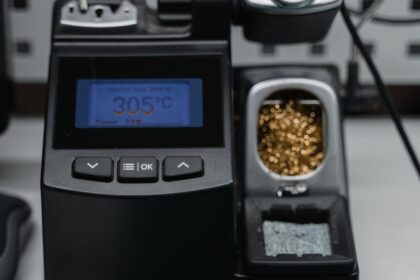Single Line Diagrams (SLDs) are essential in illustrating the logical flow of electrical and AV systems. They offer a streamlined view of how components like circuit breakers, transformers, panels, and loads connect within a project. However, as systems grow in complexity, keeping track of each device’s reference, label, or circuit number becomes increasingly difficult. That is where auto-numbering plays a critical role in simplifying and organizing your schematic.
With intelligent tools such as XTEN-AV, creating SLDs is faster, smarter, and far more organized thanks to built-in automation and advanced AI Schematic Drawing Tools. These tools don’t just help with placing symbols or making connections—they also bring structure and order to your diagrams through automated numbering and tagging systems.
In this blog, we’ll explore how auto-numbering improves workflow, prevents errors, and enhances clarity in your SLDs. Plus, we will walk through some key tips to make the most of this feature in XTEN-AV.
Why Auto-Numbering Matters in SLDs
Manual numbering might seem manageable when working on small systems, but it becomes inefficient and error-prone in medium to large projects. Without consistent tagging and labeling:
-
Devices are misidentified
-
Cable schedules become confusing
-
BOMs contain incorrect references
-
Teams miscommunicate
-
Troubleshooting becomes a nightmare
Auto-numbering eliminates these risks by assigning clear, structured identifiers to every component—automatically and accurately.
XTEN-AV: Simplifying Auto-Numbering with AI
XTEN-AV is a powerful cloud-based platform built specifically for AV, electrical, and low-voltage system designers. At its core are AI Schematic Drawing Tools that automate repetitive tasks like device placement, routing, validation, and of course, numbering.
The platform uses AI to understand your design logic and generate smart numbering schemes for every device and connection. Whether you are designing a small commercial setup or a multi-floor AV network, XTEN-AV ensures your SLD remains clean, organized, and easy to interpret.
Tip 1: Use Consistent Naming Conventions
Before jumping into auto-numbering, establish a clear and logical naming convention. Decide how you want your components labeled—by floor, area, panel, or system type. For example:
-
CB-101 (Circuit Breaker on Panel 1)
-
LGT-201 (Lighting Load on Floor 2)
-
TRF-MB01 (Main Transformer at Building Entry)
XTEN-AV allows you to define custom prefixes and formats before auto-numbering begins. You can even build templates with preconfigured naming rules for recurring project types.
Tip 2: Auto-Number by Zones or Subsystems
Large systems are often broken into smaller zones such as electrical rooms, risers, or floors. In XTEN-AV, you can use these zones to guide auto-numbering. This approach offers several benefits:
-
Easier troubleshooting
-
Faster system navigation
-
More intuitive circuit mapping
By using the AI engine, XTEN-AV can automatically detect zones and assign numbers accordingly, ensuring that all devices in a particular area follow a structured pattern.
Tip 3: Apply Batch Numbering for Similar Components
Let’s say you place 20 circuit breakers in a row. Instead of manually labeling each one, select all and use XTEN-AV’s batch auto-numbering tool. The system applies sequential numbers with the correct prefix in seconds.
This is especially helpful when dealing with:
-
Lighting loads
-
AV equipment
-
Distribution panels
-
Terminal blocks
The AI Schematic Drawing Tools ensure that numbering remains consistent even if components are rearranged later in the design process.
Tip 4: Let the AI Handle Cross-Referencing
One of the hardest parts of manual SLD creation is cross-referencing—linking devices on the schematic to external documents like panel schedules, cable lists, and BOMs. With XTEN-AV, this is handled automatically.
When auto-numbering is applied:
-
All references in the BOM update
-
Cable schedules include matching tags
-
Exported PDFs retain clickable references
-
Device tags are searchable in the project dashboard
This minimizes human error and eliminates redundant data entry.
Tip 5: Use Smart Filters for Numbering Updates
Suppose halfway through your project, a new panel is added and needs devices numbered in sequence. XTEN-AV makes this easy by offering filters that allow you to:
-
Isolate unnumbered components
-
Select only items of a certain type
-
Re-number devices by panel, room, or tag prefix
You can apply new auto-numbering rules to just a portion of the SLD without affecting previously labeled items.
Tip 6: Preview Before Applying
Before finalizing auto-numbering, XTEN-AV provides a preview of how the new tags will look. This allows you to:
-
Double-check for duplicates
-
Confirm the format aligns with client requirements
-
Adjust prefixes or suffixes as needed
The preview ensures that you don’t commit to an incorrect numbering structure—saving rework and confusion later.
Tip 7: Re-Number Without Redoing the Layout
In traditional tools, re-numbering often means undoing large parts of the schematic. With XTEN-AV, numbering is decoupled from layout. That means:
-
You can move components without losing tags
-
You can re-apply numbering rules at any stage
-
You can maintain references even after design iterations
This flexibility is especially helpful when collaborating with teams or receiving client revisions mid-project.
Tip 8: Export Tagged Documentation Instantly
Once your SLD is complete and all components are numbered, you can generate fully tagged documentation with just a few clicks.
XTEN-AV allows you to export:
-
Tagged BOMs
-
Cable schedules with references
-
Panel schedules sorted by device number
-
SLD PDFs with device tags included
Because numbering is done using AI Schematic Drawing Tools, the exported documents are accurate and aligned with the schematic 100 percent of the time.
Tip 9: Version Control for Numbering Changes
XTEN-AV’s cloud-based environment includes automatic version control. If you update numbering rules or overwrite a tag set:
-
You can roll back to a previous version
-
You can compare what changed
-
You maintain a full history of tag revisions
This is crucial for teams working on multiple versions of the same project or sharing schematics with stakeholders.
Conclusion
Auto-numbering may seem like a small feature, but in the world of SLD creation, it can save hours of time, prevent costly mistakes, and ensure a clean, readable design. Platforms like XTEN-AV take this to the next level with AI Schematic Drawing Tools that automate and validate every part of the process—including smart numbering.
By following the tips above, you’ll not only speed up your workflow but also produce consistent, code-compliant diagrams that are easy to understand and maintain. Whether you are building your first SLD or working on a complex multi-zone project, let auto-numbering do the heavy lifting—so you can focus on design.
If you haven’t tried it yet, now is the perfect time to explore XTEN-AV and see how automation can redefine your schematic design process from the ground up.
Read more: https://talkline.co.in/read-blog/112150




